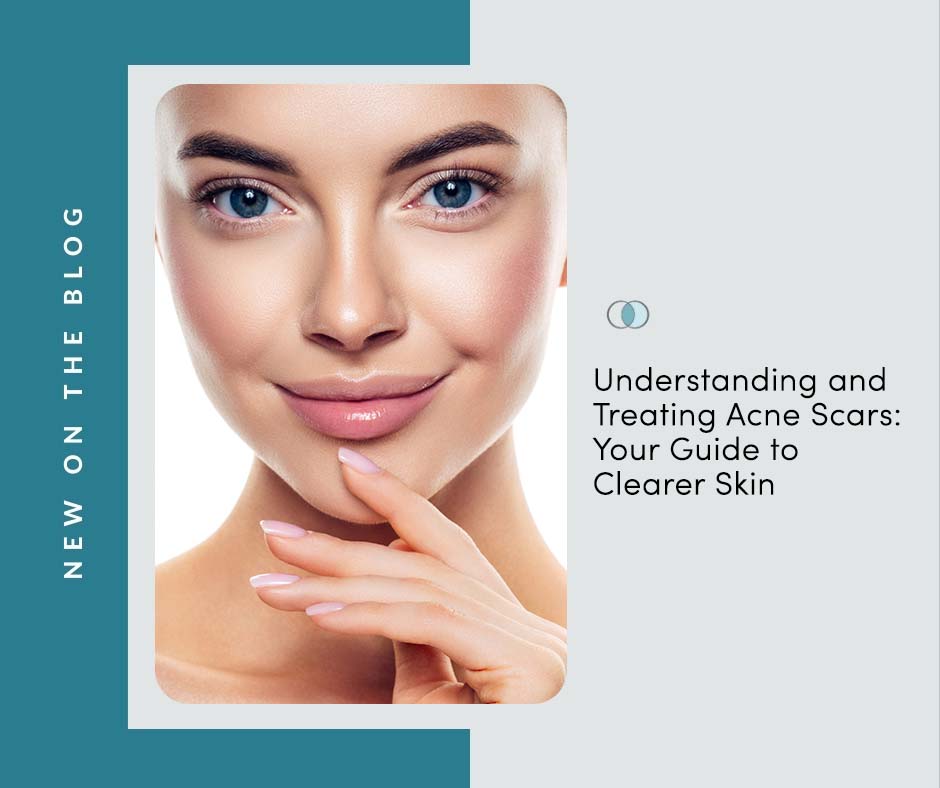
Acne is a common skin condition that affects millions of people worldwide. While the physical discomfort and emotional distress caused by active acne can be challenging, the aftermath can be just as disheartening—acne scars. Acne scars are a lasting reminder of past skin troubles, but the good news is that there are various treatments and strategies available to help improve their appearance. In this blog, we will explore the different types of acne scars, their causes, and the best approaches for treating and preventing them.
Types of Acne Scars
Ice Pick Scars: These are deep, narrow scars that resemble small punctures in the skin. They result from deep inflammatory acne and can be challenging to treat.
Boxcar Scars: Boxcar scars are broad, shallow depressions with well-defined edges. They often give the skin a pitted appearance.
Rolling Scars: These scars have a wavy, rolling texture and typically occur due to tethering of the skin to underlying tissue.
Hypertrophic Scars: Unlike most acne scars, hypertrophic scars are raised rather than depressed. They result from an overproduction of collagen during the healing process.
Atrophic Scars: Atrophic scars are depressions in the skin and include both ice pick and boxcar scars. They form when the skin loses tissue during the healing process.
Causes of Acne Scars
Acne scars develop when the skin’s healing process is disrupted. This can happen for several reasons:
Inflammation: Inflammatory acne, such as papules, pustules, and cysts, can damage the skin’s collagen and elastin fibers, leading to scars.
Picking or Squeezing Pimples: Manipulating acne lesions can cause further inflammation and damage to the skin, increasing the risk of scarring.
Delayed or Inadequate Treatment: Failing to treat acne promptly or using ineffective treatments can prolong the inflammatory process, increasing the likelihood of scarring.
Genetics: Some individuals may be genetically predisposed to scar more easily than others.
Treating Acne Scars
The treatment of acne scars depends on their type, severity, and the patient’s skin type. Here are some effective approaches:
Topical Treatments: Certain creams, such as those containing retinoids or alpha hydroxy acids, can help improve the appearance of mild acne scars by promoting skin cell turnover.
Chemical Peels: Chemical peels involve the application of a chemical solution to the skin, which removes the top layer and encourages the growth of smoother, scar-free skin underneath.
Microneedling: This procedure uses a device with fine needles to create controlled micro-injuries in the skin, stimulating collagen production and reducing the appearance of scars.
Laser Therapy: Laser treatments, such as fractional laser therapy and CO2 laser resurfacing, can target specific types of acne scars and improve their appearance.
Dermal Fillers: Injectable fillers can temporarily raise depressed scars, making them less noticeable.
Surgical Excision: In some cases, a dermatologist may recommend surgically removing certain types of scars, especially hypertrophic scars.
Preventing Acne Scars
Prevention is the best strategy for avoiding acne scars:
Early Treatment: Seek professional help for acne as soon as it develops to reduce the risk of scarring.
Hands Off: Resist the temptation to pick or squeeze pimples, as this can exacerbate inflammation and lead to scars.
Sun Protection: Always use sunscreen to protect your skin from UV damage, which can worsen the appearance of scars.
Avoid Harsh Skincare: Be gentle with your skin, avoiding harsh exfoliants or scrubs that can worsen inflammation.
Conclusion
Acne scars can be a distressing consequence of a common skin condition, but they are not permanent. With the right treatment and prevention strategies, you can significantly improve the appearance of your skin and boost your self-confidence. Remember that consulting with a dermatologist is essential to determine the best approach for your specific type of acne scars. With patience and proper care, clearer and smoother skin is within reach.
